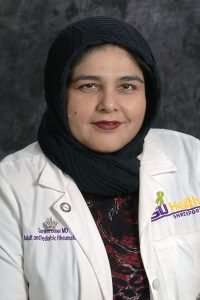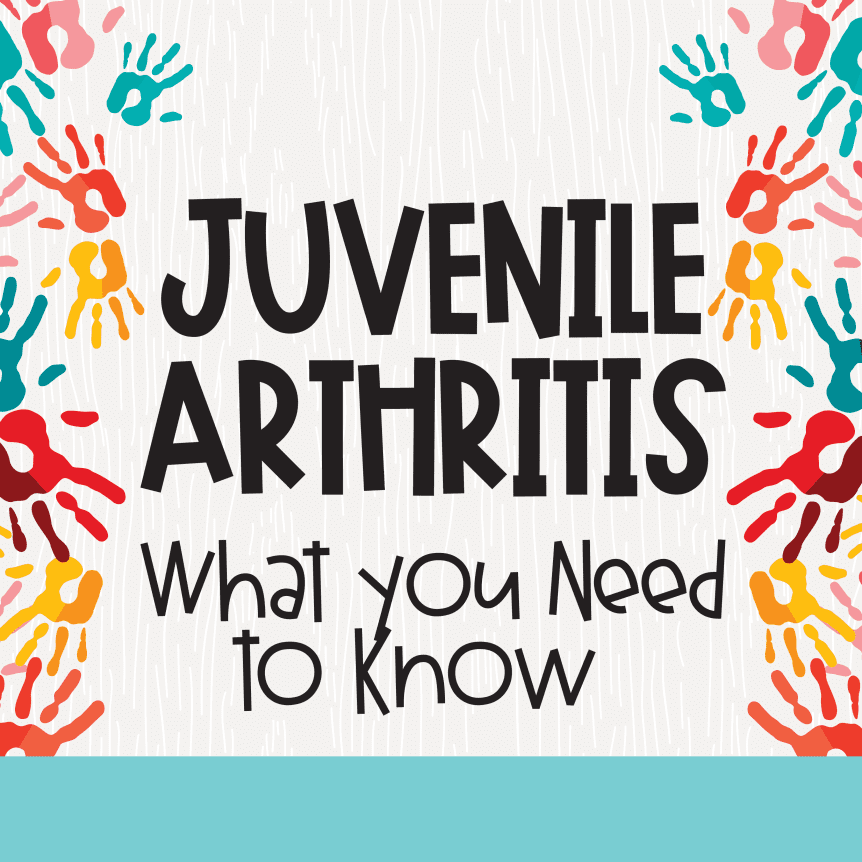July is Juvenile Arthritis Awareness month. Not everyone knows that kids can present with arthritis as early after first year of their age. Juvenile Idiopathic arthritis (JIA), also known as pediatric rheumatic disease, is an umbrella term to describe the inflammatory rheumatic diseases that develop in children under the age of 16. These conditions affect nearly 300,000 kids in the United States. A child with JIA has swelling of one or multiple joints which persists after six weeks. Some subtypes of JIA are more common in young girls than boys.
Most kinds of JIA are autoimmune diseases. The immune system, which is supposed to fight against foreign pathogens like viruses and bacteria, gets confused and releases inflammatory cytokines that attack child’s healthy tissue. In most of JIA cases, this will cause joint pain, inflammation, swelling, morning stiffness and limping but certain types of JIA have few or no joint symptoms or only affect the skin and other internal organs.
The exact causes of JIA are unknown, but scientists believe that certain genes may cause JIA when immune system is triggered by a virus, bacteria or other environmental factors. There is no evidence that certain foods or lack of vitamins can cause the disease.
Juvenile Idiopathic Arthritis is the most common referral in Pediatric Rheumatology clinic and includes six types: oligoarthritis, polyarthritis, juvenile psoriatic arthritis, systemic onset JIA, enthesitis-related arthritis, and undifferentiated. JIA causes joints to be stiff, warm, painful and swollen. This results in difficultly moving after rest or completing everyday tasks like writing, walking or running. Joint symptoms may further worsen after prolonged rest and patients report morning stiffness or limping after naps.
Juvenile Idiopathic Arthritis can also affect other body organs apart from joints. Eye pain, redness, sensitivity to light and trouble seeing properly result from uveitis (chronic eye inflammation). Uveitis is frequently seen with Oligoarthritis, psoriatic arthritis and enthesitis related arthritis. Uveitis in young girls needs frequent monitoring (every 3 months) by pediatric eye doctor. Skin can be involved, and symptoms may include a scaly red rash (psoriatic), or a light spotted pink rash with fever (systemic). Other symptoms include feeling tired (fatigued), appetite loss and daily high spiking fever (systemic onset JIA).
A pediatrician may provide initial screening for joint symptoms followed by a child being referred to a Pediatric Rheumatologist (a doctor with specialized training in treating arthritis of children). There are 9 states without a Pediatric Rheumatologist (6 states have only one) and not every region has availability of this kind of specialist. A Pediatric Rheumatologist performs thorough history and physical examination and can diagnose child with JIA. Laboratory tests are used to detect inflammatory markers and imaging tests (X-rays, MRIs) are utilized to evaluate for signs of joint damage. These tests are also used to eliminate other causes like sports injuries or infection.
A delay in the diagnosis of JIA may result in permanent joint damage and deformities. With early referral and aggressive treatment, remission (little or no disease activity or symptoms) is possible. Children are treated with nonsteroidals, intraarticular (within joint) steroid injections, disease modifying anti rheumatic drugs (DMARDs mostly like methotrexate, hydroxychloroquine) and biologics injections like Etanercept (Enbrel) or adalimumab (Humira).
The goals of JIA treatment are to slow down inflammation and prevent disease progression while also improving quality of life and preventing irreversible or fatal complications like permanent joint deformities and macrophage activation syndrome in Systemic onset JIA.
Pediatric Rheumatologists prefer early, aggressive treatment to slow disease progression and achieve full remission. Post biologic era has significantly improved patient outcome and most children no longer require any assistive devices (like cans, crutches or wheelchairs). It is very important that children and teens with arthritis maintain a healthy lifestyle and eat balanced diet. Sometimes, they also require physical therapy to regain full joint function and muscle strength. Children with JIA may seek treatment by a multi-disciplinary team at clinics at Ochsner LSU Health Shreveport and Shriner’s Hospital for Children.
 Written By Sarwat Umer, MD
Written By Sarwat Umer, MD
Associate Professor Clinical of Internal Medicine / Pediatrics Center of Excellence in Arthritis and Rheumatology, LSU Health Shreveport
Areas of Specialty: Juvenile arthritis, Pediatric Lupus, Scleroderma, Vasculitis, Uveitis, Juvenile Dermatomyositis, Morphea, IBD related arthropathy, Juvenile Sarcoidosis and Auto inflammatory syndromes

